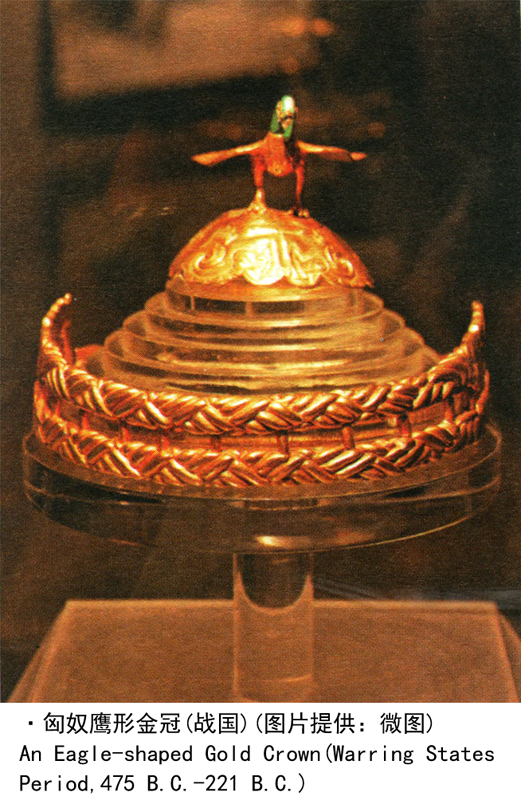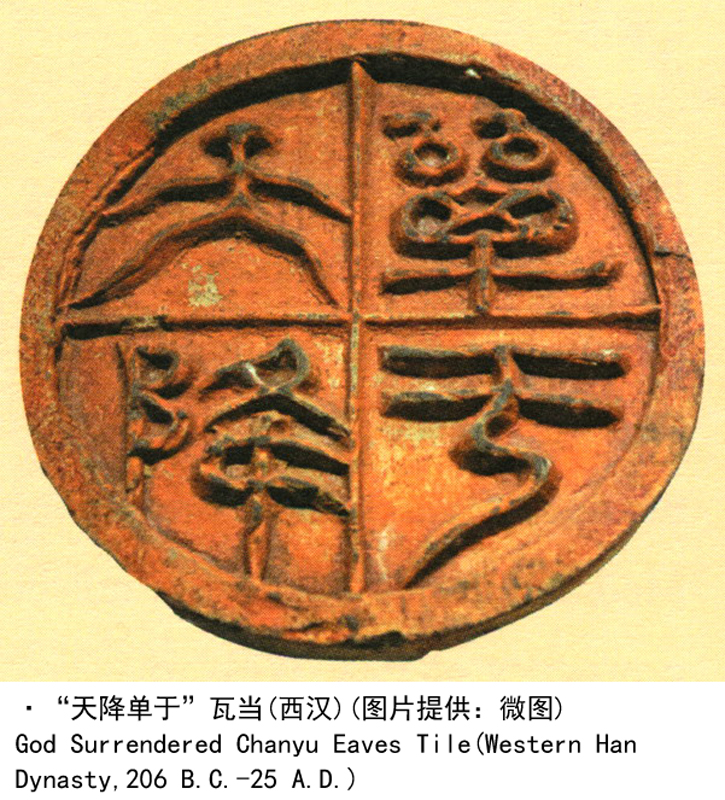丝路概说
- 交通路线
- 长安与丝绸之路
- 从长安到罗马——汉唐丝路全程探行纪实上
- 从长安到罗马——汉唐丝路全程探行纪实下
- 海上丝路史话
- 丝绸之路史研究
- 早期丝绸之路探微
- 早期丝绸之路文献研究
- 中西丝路文化史
- 沧桑大美丝绸之路
- 传播友谊的丝绸之路
- 路途漫漫丝貂情——明清东北亚丝绸之路研究
- 世界的中国——丝绸之路
- 丝绸之路
- 丝绸之路寻找失落的世界遗产
- 丝绸之路2000年
- 丝绸之路——从西安至帕米尔
- 丝绸之路经济带发展报告2014
- 丝绸之路考古十五讲
- 丝绸之路——神秘古国
- 丝绸之路——沿线城镇的兴衰
- 丝绸之路在中国
- 丝路景观
- 丝路起点长安
- 丝路文化新聚焦
- 丝路之光——创新思维与科技创新实践
- 中国丝绸之路交通史
- 中华文明史话-敦煌史话
- 中国·北海合浦海上丝绸之路始发港理论研讨会论文集
- 丝绸之路
- 丝绸之路新史
- 西域考古文存
- 丝绸之路的起源
▲丝绸之路的开通
作者:方明






中国丝绸向外传播的时间很早,可追溯到公元前5—6世纪。考古学家曾在德国斯图加特一座公元前500多年的古墓中,发掘出了中国丝绸的残片。公元前4世纪时,欧洲人已经开始通过丝绸来认识中国了。希腊史学家克泰夏斯曾在史学著作《史地书》中称中国为“塞里斯”,意为“丝之国”。在很长一段时间里,由于路途遥远且交通不便,丝绸能够运往西方的极为稀少,因而也就极为名贵。
据记载,古罗马凯撒大帝(前102—前44)曾经穿着一件中国丝袍在剧场看戏。王公大臣们见到这光彩华丽的丝绸,竟一时无心看戏,目光都集中在凯撒大帝身上,称羡不已。这种现象直到举世闻名的“丝绸之路”开通以后才逐渐得到改变。
在中国,从战国后期到秦汉之际,中原王朝的北部疆域时常遭到北方游牧民族匈奴人的袭扰。汉朝的缔造者汉高祖刘邦甚至在白登山被匈奴骑兵围困,险些命丧于此。此后,汉朝对匈奴采取和亲政策,向匈奴赠送许多丝帛财物,以换取双方之间的和平。公元前140年,汉武帝即位。经过汉初的休养生息,此时国内社会安定,经济繁荣发展,国力已经大为强盛。汉武帝开始采取积极的对外政策,其首要一点就是击败匈奴,维护北部边疆的安定。汉武帝听说西域大月氏国的首领被匈奴所杀,大月氏人被迫迁走,于是计划与大月氏结成联盟来夹击匈奴。
为了实现这个计划,汉武帝于西汉建元三年(前138)派遣使臣张骞出使西域。张骞率领一百多人的队伍从陇西(今甘肃临洮南)出发前往大月氏,不料途中被匈奴人扣留。匈奴单于(首领)将张骞流放于漠北草原。张骞在此度过了十几年,虽娶了匈奴女子为妻,还有了自己的孩子,但是却一直没有忘记自己的使命。后来,他终于找到机会逃出了匈奴,继续向西,绕过大宛、康居,到达了已在阿姆河流域定居建国的大月氏。可是,此时大月氏人已经满足于这块水草丰美的地方,过上了安定的生活,不愿再向匈奴挑起战端了。
张骞在大月氏停留了一年,见游说不成,便踏上了归途。在回汉朝的途中,他又被匈奴扣留,一年后匈奴发生内乱,张骞才乘机逃脱。公元前126年,也就是出发13年后,张骞终于返回了西汉都城长安。他出发时率领的百余人,回来后仅剩下一名随员了。张骞向汉武帝报告了出使的情况和在西域诸国的所见所闻。汉武帝被张骞所述的西域各种珍奇物产所吸引,决定与西域各国缔结友好的关系。
公元前119年,张骞奉命再次出使西域。他率领三百余人,携带大量的金币、丝绸和牛羊浩浩荡荡地出发了。他们首先到达了地处西域要冲的乌孙(今巴尔喀什湖东南),然后派遣副使分别前往大宛、康居(今哈萨克斯坦东南)、大夏、安息(今伊朗东北部)、身毒(即古印度)等国,受到了隆重接待,并与这些国家进行了大规模的物资交流。公元前115年,张骞回到长安,大宛、安息等国也遣使随同汉朝使臣前来长安。
张骞两次出使西域,开辟了横贯亚洲内陆的东西方交通要道。到公元前104—前101年,西汉在西域设立了酒泉、张掖、武威、敦煌四郡,正式将西域地区纳入中国的版图,也为东西方文化的交流提供了安全可靠的通道。从此,汉朝使者和商旅不断前往西域进行政治和贸易活动,西域的商队也不远万里接踵而来,东西方的交往出现了空前的繁荣局面。大批的中国丝绸通过这条交通线,源源不绝地运往中亚、西亚和欧洲。近年的考古发掘陆续发现,在东起长安、西至地中海东岸的广大地区都存在着大批中国古代的丝织品,反映出这条商路的繁荣景象。
>Opening of the Silk Road
Chinese silk was introduced to the outside world as early as during the 5th—6th century B.C.Archaeologists found scraps of Chinese silk in an old tomb dated 500 B.C. at Stuttgart,Germany.By 400 B.C.,Europeans began to learn about China through Chinese silk.In his historical works Book on History and Geography,the Greek historian Keta Pinchas referred to China as〝Seres〞,meaning〝a country of silk〞.During a long period of time,due to the long distance and inconvenience of communication,only a few silk products could be shipped to the West,making them extremely precious and valuable.
According to records,once the Roman Emperor Julius Caesar(102 B.C.-44 B.C.)wore a silk gown when he was watching an opera in the theater.When kings and ministers saw the dazzling silk gown,they couldn't stop admiring it.The rarity of silk was only changed gradually after the opening of the world-renowned Silk Road.
During the late Warring States Period and the ensuing Qin and the Han dynasties,the northern frontier of the Central Plains kingdoms were often subject to harassment by the northern nomadic Huns.Emperor Liu Bang,founder of the Han Dynasty, was once besieged by the Huns cavalry at Mount Baideng where he almost lost his life.Since then,in order to seek peace of the Central Plains,the Han rulers adopted a policy of pacification through marriage towards the Huns.They also sent all kinds of precious presents such as silk and cotton to the Huns.In 140 B.C.,Emperor Wu of the Han Dynasty ascended the throne. After a period of recovery,national strength was greatly enhanced with social stability and economic prosperity prevailing in the country.The Han Dynasty ruler began to pursue a pro-active foreign policy and set the goal to defeat the Huns in order to maintain peace and stability in the northern frontier.Having learned that the Huns had killed the head of the Dayuezhi kingdom in the Western Regions and forced its people to leave their land,Emperor Wu of the Han Dynasty planned to form an alliance with Dayuezhi to make pincer attack against the Huns.
In order to implement this plan,Emperor Wu dispatched Zhang Qian as his special envoy to the Western Regions in the 3rd year of the Jianyuan period(138 B.C.).leading a contingent of more than one hundred men,Zhang Qian set off from Longxi(present-day South Lintao of Gansu)for Dayuezhi.He was unexpectedly detained by the Huns on the way.Head of the Huns put Zhang Qian on exile on the grassland of Mobei where he spent more than a decade.Although Zhang Qian eventually married a Huns girl and had children with her,he never forgot his errand.Finally he found an opportunity to escape from the Huns and continued his journey to the West.He passed the Dayuan and Kangqu kingdoms and finally arrived at Dayuezhi which had already settled down in the Amu River basin area.As the Dayuezhi people were already leading a stable and peaceful life on this lush land,they didn't want to launch wars against the Huns.
Having failed to lobby Dayuezhi into an alliance with the Tang,Zhang Qian embarked on his return journey to his home country after one year.Unfortunately he was again detained by the Huns.A year later,civil unrest broke out in the Huns.Zhang Qian took the opportunity and escaped.In 126 B.C.Zhang Qin returned to Chang'an,capital city of the Western Han Dynasty,thirteen years since he got on the mission.Of the more than one hundred men he led on the mission,only one person returned with him.Zhang Qian reported to Emperor Wu on the mission and what he saw and heard in western countries.The Emperor was immensely impressed by the rare and precious products of western countries that he decided to establish friendly ties with them.
In 119 B.C.Zhang Qian was dispatched to the Western Regions on a second mission.Leading a contingent of more than three hundred men and bringing with them a large quantity of gold,silk,cattle and sheep,Zhang Qin first arrived in Wusu(present-day southeast of Lake Balkhash),an important hub in the Western Regions.Zhang Qian then sent his deputies to countries such as Dayuan,Kangqu(present-day southeast Kazakhstan),Daxia,Anxi(present-day northeast Iran),Shendu(ancient India)where they were warmly received,and where they conducted large scale exchange of goods.In 115 B.C.Zhang Qian returned to Chang'an.Dayuan,Anxi and some other western region countries sent envoys to travel together with the Han envoy.
Zhang Qian's two missions to the Western Regions opened the East-West trans-Asia inland transportation routes.Between 104 B.C.and 101 B.C.Western Han set up four counties(juns)in the Western Regions;Jiuquan,Zhangye,Wuwei and Dunhuang and formally incorporated the Western Regions into Western Han's territory.This had also provided a safe and reliable channel for East-West cultural exchange.Since then,Han Dynasty envoys and merchants constantly traveled to the Western Regions to carry out political and commercial activities.Similarly caravans from Western Regions traveled long distance to the Central Plains.A phenomenon featuring unprecedented East-West interaction and prosperity emerged.Large quantities of Chinese silk were shipped to Central Asia,West Asia and Europe through this transportation artery.In archaeological findings unearthed in recent years,large quantities of ancient Chinese silk were found in the vast areas between Chang'an in the East and the Mediterranean in the West,reflecting the prosperity of East-West trade in ancient times.
汉武帝三击匈奴
西汉初年,北方的匈奴一直对中原王朝构成巨大的威胁。汉武帝登基后,对匈奴展开了大规模的反击战。重大的战役主要有三次,即漠南之战、河西之战和漠北之战。漠南之战在公元前127年,汉武帝派大将军卫青、李息沿黄河北岸前进,采取避实击虚的战略,迂回到陇西,包围了河套地区及其以南的匈奴军,完全收复了河套以南地区,解除了匈奴对都城长安的威胁。河西之战在公元前121年,汉武帝派霍去病率军深入匈奴境内千余里,与匈奴军短兵相接,大获全胜。汉军一鼓作气攻到祁连山下,再次大破匈奴军,俘获敌军3万多人,匈奴贵族损失惨重。漠北之战在公元前119年,卫青和霍去病分东、西两路进军,深入到漠北作战,这是汉军规模最大的一次远征。卫青北进千余里,霍去病深入2000余里,将匈奴主力全部歼灭。经过这次战役,匈奴力量大大削弱,再也无力与西汉对抗了。
Three Campaigns Against the Huns by Emperor Wu of the Han Dynasty
During early years of the Western Han Dynasty,Huns in the north constituted enormous threat to empires of the Central Plains.After his accession to the throne,Emperor Wu of the Western Han Dynasty initiated several large-scale counterattacks against the Huns.Three major campaigns were waged against the Huns including the Monan campaign,the Hexi campaign and the Mobei campaign.The Monan campaign was launched in 127 B.C.,Emperor Wu sent General Wei Qing and Li Xi to advance along the north bank of the Yellow River.Adopting a strategy of attacking the weak spots while avoiding the main force,the Han army made its way to western Gansu through roundabout movements and besieged the Huns troops in the Yellow River Loop area and areas south of the Loop.This campaign recovered areas south of the Yellow River and removed the haunting threat of the Huns on the capital city Chang'an.The Hexi campaign took place in 121 B.C.Emperor Wu sent general Huo Qubing to lead the army penetrate more than five hundred kilometers into the Huns-controlled areas and fought a close combat with the Huns army and defeated it.The Han army charged further to the Qilian Mountain,and captured more than thirty thousand Huns soldiers.The Huns nobles suffered serious losses.The Mobei campaign took place in 119 B.C.,General Wei Qing and Huo Qubing each led an army and moved to the heart of the Mobei area from the east and the west wings respectively.This was the largest expedition taken by the Han army.Wei Qing's troop traveled some five hundred kilometers while Huo Qubing's more than a thousand kilometers.Together they wiped out the Huns main forces.After this battle,the Huns forces were greatly weakened and could no longer pose any threat to the Western Han Dynasty.
丝绸之路/方明编著.-合肥: 黄山书社, 2013;